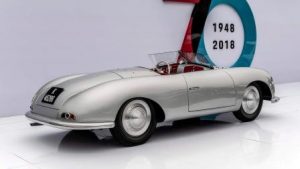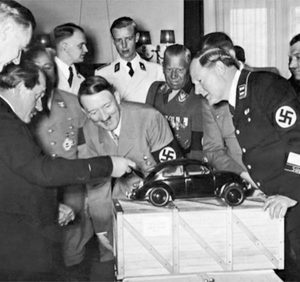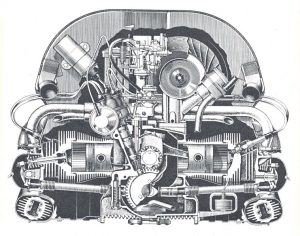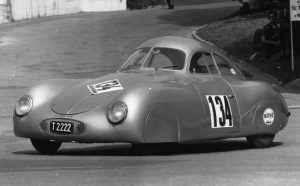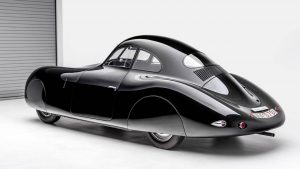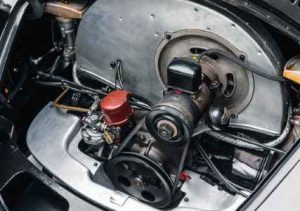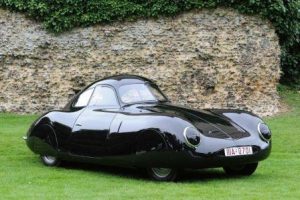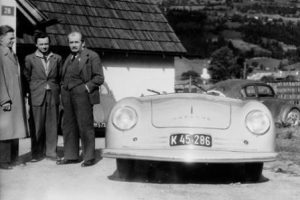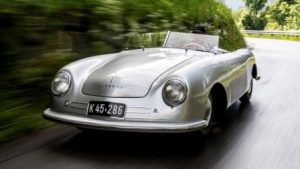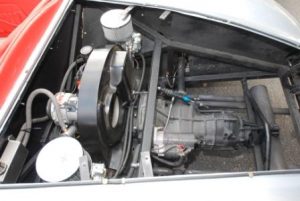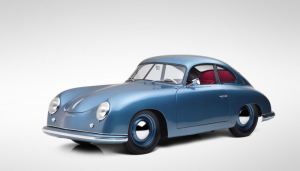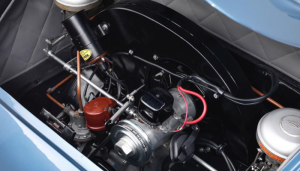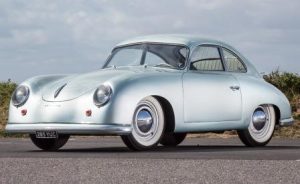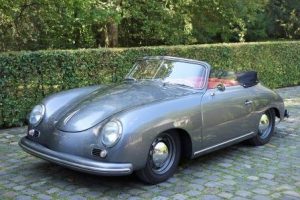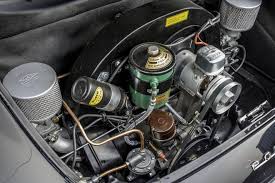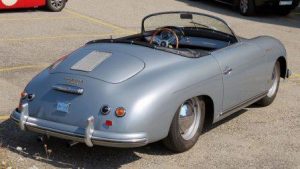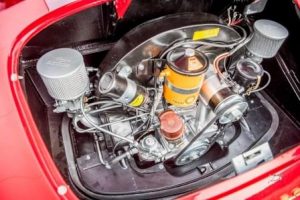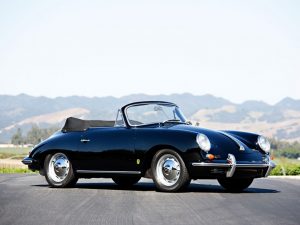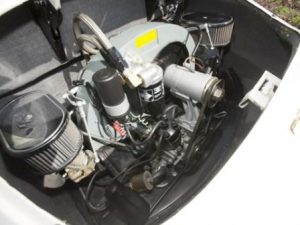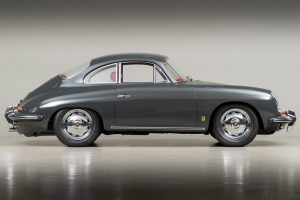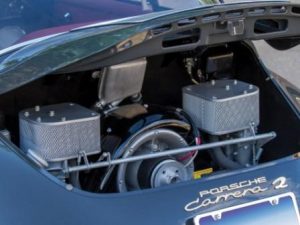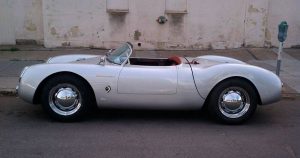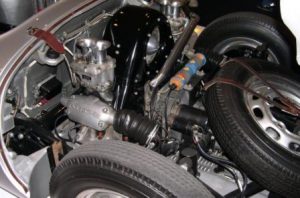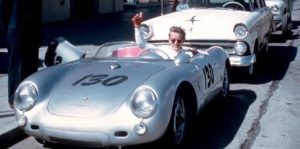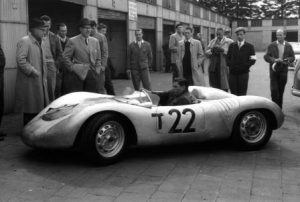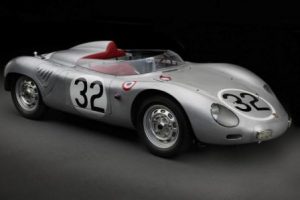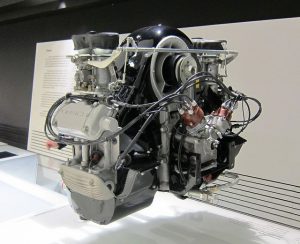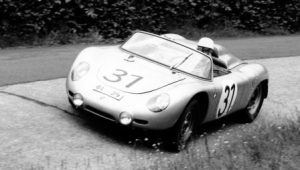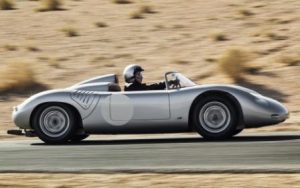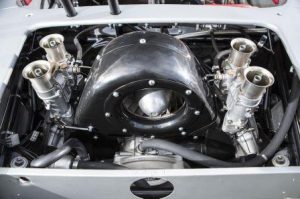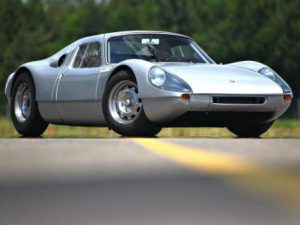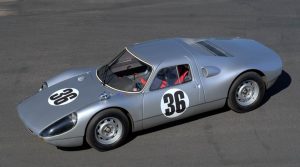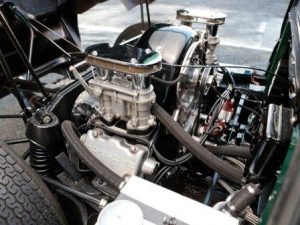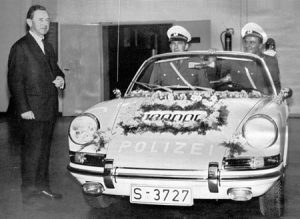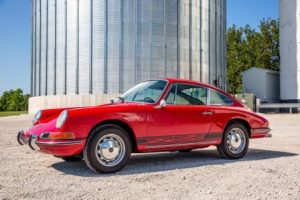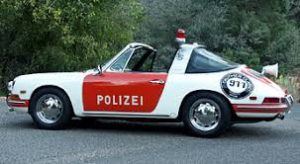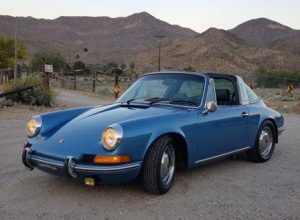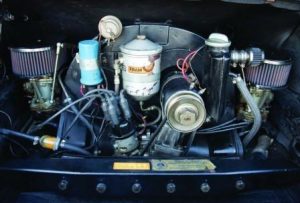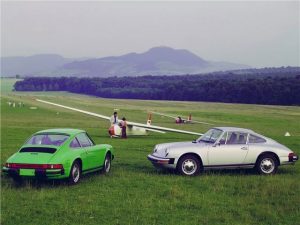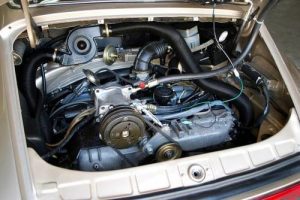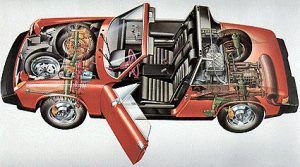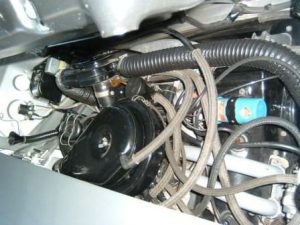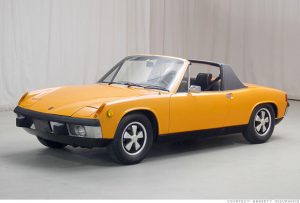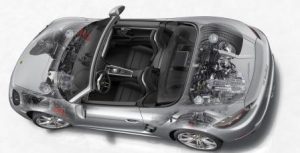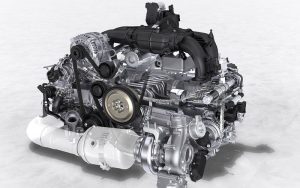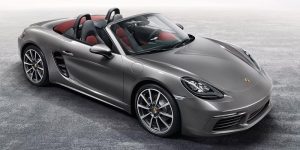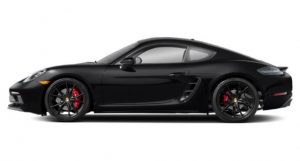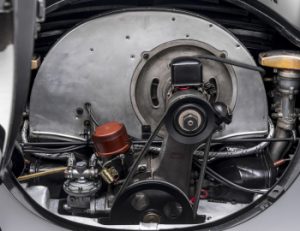Most Porsche enthusiasts regard the 1948 Type 356 as the first Porsche simply because it was the first model sold by the company. To celebrate this milestone, Porsche celebrated their 70th Anniversary in 2018 as “70 years of sports car passion”. However, if we look at the company’s history, Porsche actually started producing sports cars as early as 1939 but not on a commercial scale.
In 1931, Ferdinand Porsche founded his own company, Dr. Ing. h. c. F. Porsche GmbH in Stuttgart and offered motor vehicle development work and consulting but did not build cars under his name. In 1938, he completed the design for the Volkswagen Type 1, which became known in German as the Käfer or “Beetle”, from which Porsche would borrow numerous mechanical components to produce his sports cars. From 1939 to 2019, there are 80 years worth of Porsche vehicles powered by 4-cylinder engines, either in horizontally-opposed (flat-four) or inline-4 cylinder configurations. For this story, let’s take a look at the Porsche cars with flat-four or boxer engines:
Type 64 (1939)
In 1939, Dr. Porsche developed the Porsche 64 based on the design drawings of the Type-64 “record car” and fitted with mechanical components from the 1938 prototype Beetle. The chassis was heavily reinforced and the air-cooled flat-four engine was reworked to produce around 40 horsepower or 50 hp in race trim. Porsche Büro made the body, which was shaped in the wind tunnel, for Type 114 V10 sports car project that never came into existence. Dr. Porsche entered the car in the 1939 Berlin-Rome race as a public relations ploy.
Three Porsche 64 cars were made in hand-shaped aluminum by the coachbuilder Reutter. One was destroyed early in World War II, one was used by the Porsche family, and a third one was kept in storage. In May 1945, American troops discovered the Porsche 64 in storage, cut the roof off, and used it for joyriding for a few weeks until the engine seized. The car was scrapped but was later rebuilt, restored and displayed in the Peterson Automotive Museum in Los Angeles, California. The car used by the Porsche family was restored by Battista Farina in 1947, sold to Austrian motorcycle racer Otto Mathé in 1949, won the Alpine Rally in 1950, and participated at the Monterey Historic Automobile Races in Monterey, California in 1982. The Porsche 64 is now considered as the first true Porsche design precursor to the post-war Type 356 production cars.
Type 356 (1948-1965)
After World War II ended in 1945, Dr. Ferdinand Porsche was incarcerated for 20 months and his son, Ferry Porsche, had to steer the company through some of its most difficult days until his father’s release in August 1947. Using various mechanical components of the Beetle including the air-cooled flat-four engine, Ferry built the first models of what was to become the Type 356 in a small sawmill in Gmünd, Austria. The first 356 units with aluminum bodies were produced by Porsche Konstructbüro GesmbH founded by Ferry and his sister, Louise Piesch.
In 1950, the production of the 356 was taken over by Dr. Ing. h.c. F. Porsche GmbH in Stuttgart. Porsche commissioned Reutter Karosserie, which had previously collaborated with the firm on Volkswagen Beetle prototypes, to produce the 356’s steel body. In 1952, Porsche constructed their Werk 2 assembly plant in a Zuffenhausen across the street from Reutter Karosserie to increase production. Many regard the 356 as the first Porsche simply because it was the first model sold by the company.
Type 550S (1953-1956)
Race car driver Walter Glöckler came up with the idea of building an extremely compact and lightweight sports car. Porsche came out with the Type 550S, a mid-engine race car powered by an all-aluminum 1,498cc air-cooled flat-four engine with double overhead camshafts (DOHC) on each cylinder bank, driven by vertical shafts, actuating 2 valves per cylinder. This quad-cam engine is equipped with twin 2-barrel Solex PJJ carburetors and dual ignition with two separate ignition manifolds and two ignition coils as well as two double-fall gasifiers. The “Fuhrmann Engine”, as it is more popularly known, produced 112 horsepower at 6,200 rpm and 121 Newton-meters of torque at 5,000 rpm.
The engine is mounted in front of the rear axle to give the 550S a more balanced weight distribution and neutral handling. However, the low mass moment of inertia near its vertical axis can lead to a sudden, difficult-to-control rotation of the car. The first 550S had a fully synchronized 4-speed manual transmission but changed to a five-speed gearbox in 1956. It won the Nurburgring Eifel Race in May 1953 and would usually finish in the Top 3 of its class. US Porsche distributor Max Hoffman was the one who named it as the “Spyder” to appeal to American buyers. Among the first 90 Type 550S cars, the most famous was James Dean’s 1955 Porsche 550 Spyder, “Little Bastard” numbered 130 (VIN 550-0055). It crashed at the Cholame Junction on September 30, 1955 and claimed the actor’s life.
Type 718 (1957-1962)
The Type 718 was Rennsport (racing sports) car with a short wheelbase (German Kurz) developed from the 550A with improvements being made to the body work and suspension. It was often referred to as the RSK (Rennsport Kurz) and had a mid-engine layout using the 142-horsepower 1.5-litre Type 547/3 quad-cam engine. It finished 1st in class and 3rd overall at the 24 Hours of Le Mans and 2nd at the Targa Florio in 1958; overall victory at the Targa Florio in 1959; the European Hill Climb Championship in 1958 and 1959; and a class win at Le Mans in 1961.
Initially a two-seat 1.5-liter sports car, the 718 was adapted to compete in a number of different formulas and evolved according to regulation changes. The RS 60 had a larger 160-hp 1.6-litre Type 547/3 engine and a new double wishbone rear suspension. It won the 12 Hours of Sebring, the Targa Florio, and the European Hill Climb Championship in 1960. The RS 61 was almost identical to the RS 60 and won the European Hill Climb Championship in 1961.
Type 904 (1963-1965)
With a mid-engine layout inherited from the 718, the 904 was the first Porsche to use a ladder chassis and a fiberglass body, which achieved a drag coefficient of 0.34. The fiberglass body, which was bonded to the steel chassis for extra rigidity, was provided by contractors, which would later become standard practice among race car builders. The 904 was the first Porsche not to use trailing arm front and swing axle rear suspension and used coil springs with unequal-length A-arms in front.
A 180-hp 1,966 cc Type 587/3 four-cam air-cooled flat-four engine, which was touted as “probably the most complex four-cylinder ever”, powers the 904. With a 5-speed transmission and 655-kilogram curb weight, it can accelerate from 0 to 97 km/h in less than six seconds and reach a top speed of 260 km/h.
Type 902 (1965-1969, 1975-1976)
Like the Porsche 911 and its internal factory designation “Type 901”, the four-cylinder 912 was known internally as the “Type 902”. It is a nimble-handling compact 2+2 fitted with a 120-hp 1.6-liter air-cooled flat-four from the 356 that has a fuel mileage of around 12.8 kilometers per liter. On December 21, 1966, the 100,000th Porsche, a 912 Targa outfitted for the police, was delivered. The 912 initially outsold the 911 and more than 32,000 units were built from April 1965 to July 1969.
From 1970 to 1975, the 912 was replaced by the Porsche 914 as the company’s entry-level model. In 1976, a U.S.-only 912E powered by the 914-derived 2.0-liter VW Type 4 air-cooled flat-four with Bosch L-Jetronic fuel injection delivering 90 horsepower at 4900 rpm. The 912E proved to be an excellent long-distance touring car with its 75-liter fuel tank, 12.75 km/L fuel mileage and 960-kilometer range. Just 2,092 912E coupes were built from May 1975 to July 1976.
Type 914 (1969-1976)
The 4-cylinder 914 superseded the 912 as Porsche’s entry-level model for the 1970 through 1975 model years. It was manufactured and marketed collaboratively by Volkswagen and Porsche from 1969 to 1976. It was originally intended to be sold as a Volkswagen when fitted with a flat-four engine and as a Porsche with a flat-six. The 914 became Porsche’s top seller during its model run, outselling the 911 by a wide margin with over 118,000 units sold worldwide, and was voted as Motor Trend’s Import Car of the Year for 1970.
The VW versions originally featured an 80-hp 1.7-liter fuel-injected flat-four based on the Volkswagen air-cooled engine. Karmann manufactured the rolling chassis at their plant, completing Volkswagen production in-house or delivering versions to Porsche for their final assembly. A new 100-hp 2.0-liter fuel-injected version of Volkswagen’s Type 4 engine became optional in 1973 and an 85-hp 1.8-liter and the new Bosch L-Jetronic fuel injection system was added to US units in 1974 to help with emissions control. The 914 production ended in 1976.
Type 982 (2016-Present)
The first-generation Porsche Boxster (Type 986), with its liquid-cooled flat-6 engine, was introduced in 1996 and became a phenomenal success. The second-generation Boxster and the Cayman (Type 987) arrived in late 2005 while the third generation (Type 981) arrived in 2012. Since the introduction of the fourth generation (Type 982) in 2016, the two models are marketed as the Porsche 718 Boxster and Porsche 718 Cayman. Porsche revived the “718” moniker as a nod to Porsche’s racing heritage that won the Targa Florio race in 1959 and 1960. Because the 718 Boxster/Cayman went from a naturally-aspirated flat-6 engine to a turbocharged flat-four engine, the name is meant to evoke a racing series that was won by a light car that outmaneuvered the cars with more powerful engines.
A 2.0-liter flat-four turbo is the base engine while a 2.5-liter for the 718 Boxster/Cayman S model uses a turbocharger with Variable Turbine Geometry (VTG) technology to produce 361 hp. The 718 Boxster could accelerate from 0 to 97 km/h in 4.1 seconds while the 718 Cayman in can do the same in 3.9 seconds. The 718 Cayman was chosen as Motor Trend magazine’s 2nd Best Drivers’ Car in 2017 because of the car’s handling and throttle response.
From the 40-hp 1,100 cc Type 547 air-cooled flat-four derived from the Volkswagen KdF Type 1; to the 90-hp 1,582 cc air-cooled flat-four of the 356B 1600 Super 90; to the 112-hp 1,498 cc air-cooled all-alloy Fuhrmann engine; to today’s 361-hp 2.5-liter liquid-cooled flat-four, Porsche has steadily developed their compact powerplant and coaxed more performance from it. Between the 1939 Type 64 and the 2019 Type 982 Porsche 718 Boxster/Cayman spans 80 years of engineering, development, racing, refining and dedication to the horizontally-opposed four-cylinder engine which is better known as the flat-four, the 180-degree four, or the boxer-four. Porsche has always led the quest to constantly improve the boxer engine genre!
 Power Wheels Magazine A Notch Above
Power Wheels Magazine A Notch Above

